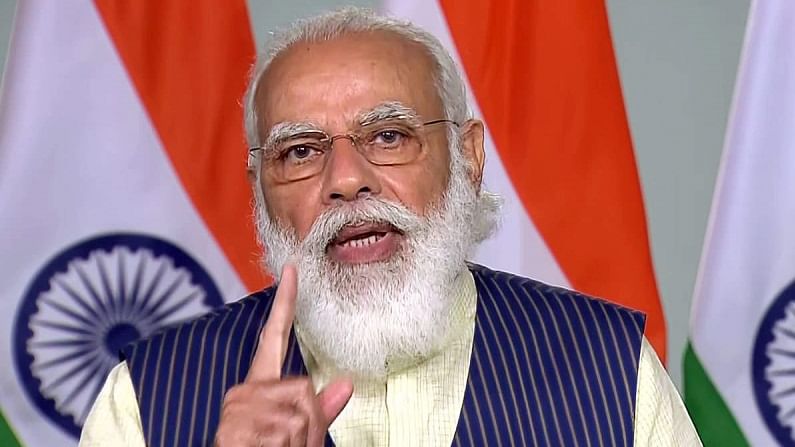Halfway into Modi 2.0 govt, here’s how its flagship schemes fared
As Modi government 2.0 nears the halfway mark, here’s a look at the progress of five flagship schemes.

Many political experts attributed the historic return of the Narendra Modi led NDA to power in the 2019 general elections due to the swift execution of a handful of public schemes. The schemes such as the Pradhan Mantri Jan Dhan Yojana (PMJDY), Ujjwala Yojana, Pradhan Mantri Awas Yojana (PMAY) and Swachh Bharat Abhiyan (SBA) among others were some of these flagship schemes that arguably had a massive role to play in bringing back Modi Sarkar with an even larger mandate.
But will these schemes help the Modi government tide over anti-incumbency yet again, when the nation goes to the polls in 2024? As Modi government 2.0 nears the halfway mark, here’s a look at the progress of five flagship schemes.
Direct benefit transfers (DBT)
In 2014, the government launched the scheme by creating 1045 lakh Jan Dhan accounts for direct benefit transfer to the poor through these accounts. By the end of the Modi government’s first tenure, in 2019, the number of accounts had swelled to 3777. And according to the latest data, 43.14 crore such accounts exist today. In the meantime, the average deposit size has also increased from Rs 800 in 2014 to Rs 3366 in 2021.
Free LPG cylinders
The Pradhan Mantri Ujjwala Yojana was pegged as a big poverty alleviation scheme in the run-up to the last general elections. By providing free LPG cylinders to five crore women members of Below Poverty Line (BPL) households, the government created massive goodwill by helping women get rid of the unhealthy practice of cooking using coal and wood. In 2018 April, the Ujjwala scheme was expanded to include women beneficiaries from seven more categories such as SC and ST communities and forest dwellers.
Based on the enormous popularity of Ujjwala 1.0, the Prime Minister, through the Union Budget for 2021-22, made provisions to launch Ujjwala 2.0, which would provide for an additional one crore deposit-free LPG connections to low-income families which were not covered under Ujjwala 1.0.
Housing for all
The importance of Pradhan Mantri Awas Yojana (PMAY) can be understood from how Yogi Adityanath, the Chief Minister of Uttar Pradesh, which is scheduled to go to polls early next year, has been selling PMAY during the ongoing campaign season.
Speaking at an event on September 2, Yogi Adityanath said, “Before the implementation of the Pradhan Mantri Awas Yojana, only half the amount of these schemes used to reach the beneficiaries. There used to be corruption in the amount reaching the public…but in just the last four years, over 4.73 lakh houses have been made available to people in rural and urban areas of the state. Today 5.51 lakh beneficiaries are entering their homes.”
Under this scheme, 1.13 crore houses have been sanctioned so far and 86 lakh houses have already been constructed.
Toilets for all
The scheme that Prime Minister Modi announced in his first I-Day speech, back in 2014, went on to get universal acclaim, for the security it provided to women and for health benefits, it brought about by reducing open defecation. When he announced this scheme, only 39% of Indian households had access to toilets. Within five years, the government announced that India was 100% open defecation-free. However, the National Family Health Survey-5 (2019-20) revealed that 100% access to toilets in rural households was available in just five states-Kerala, Manipur, Mizoram, Nagaland and Sikkim. In states such as Bihar, Gujarat, Karnataka and Maharashtra, less than 80% of households in rural areas had access to toilets.
Healthcare for all
The importance of the universal health benefit scheme in the context of two back-to-back Covid-19 waves cannot be undermined. Three years into the Ayushman Bharat-Pradhanmantri Jan Arogya Yojana (AB PM-JAY), the Centre has authorized nearly 2 crore hospitalizations according to the latest data shared by the National Health Authority. Treatments worth Rs 24,683 crore were authorized over the last three years. According to NHA data around 16.20 crore eligible beneficiaries have been under the scheme and provided with Ayushman cards to date. The scheme, which was widely publicized as the NDA led by Modi faced its first general elections, aims at providing health coverage of up to Rs 5,00,000 per entitled beneficiary per year.
Download Money9 App for the latest updates on Personal Finance.
Related
- RBI: खपत में आ रही तेजी, आंकडे दे रहे गवाही जल्द हाई ग्रोथ ट्रैक पर लौटेगी अर्थव्यवस्था
- मुंबई में पेट्रोल-डीजल वाहनों पर बैन को लेकर हो रहा विचार, सरकार ने स्टडी करने के लिए बनाई कमेटी
- SBI ने घटाया GDP ग्रोथ रेट का अनुमान, FY-25 में 6.3% से इकोनॉमी के बढ़ने की उम्मीद
- देश की आर्थिक गति बरकरार, 6.5 से 7 फीसदी ग्रोथ हासिल करने की उम्मीद
- भाविश अग्रवाल ने बताई ओला के मुनाफे की रूपरेखा, इलेक्ट्रिक कार पर नहीं है फोकस
- Budget’24: Gold, silver prices to soften soon, customs duty drops to 6%

